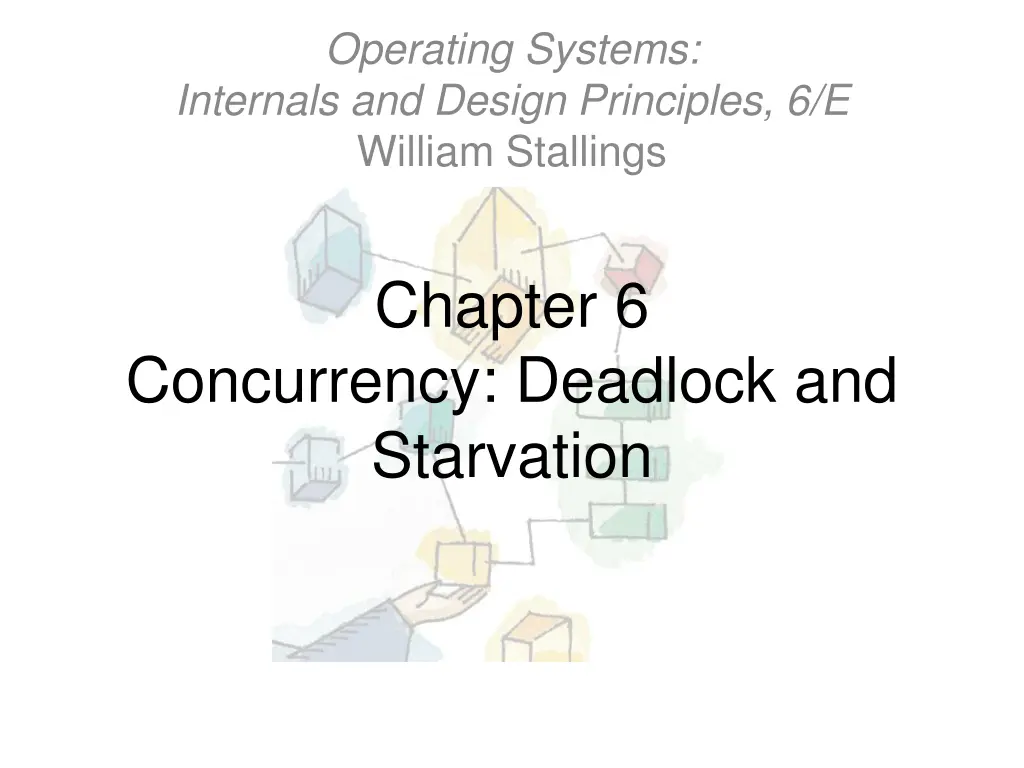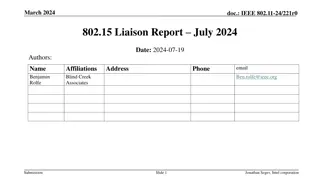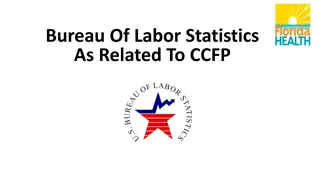
Understanding Concurrency, Deadlock, and Resource Management in Operating Systems
Explore the concepts of concurrency, deadlock, and resource management in operating systems. Learn about the causes of deadlock, types of resources, and examples of resource allocation graphs. Gain insights into how processes compete for system resources and potential solutions to prevent deadlock.
Download Presentation

Please find below an Image/Link to download the presentation.
The content on the website is provided AS IS for your information and personal use only. It may not be sold, licensed, or shared on other websites without obtaining consent from the author. If you encounter any issues during the download, it is possible that the publisher has removed the file from their server.
You are allowed to download the files provided on this website for personal or commercial use, subject to the condition that they are used lawfully. All files are the property of their respective owners.
The content on the website is provided AS IS for your information and personal use only. It may not be sold, licensed, or shared on other websites without obtaining consent from the author.
E N D
Presentation Transcript
Operating Systems: Internals and Design Principles, 6/E William Stallings Chapter 6 Concurrency: Deadlock and Starvation
Deadlock Permanent blocking of a set of processes that either compete for system resources or communicate with each other No efficient solution Involve conflicting needs for resources by two or more processes
Reusable Resources Used by only one process at a time and not depleted by that use Processes obtain resources that they later release for reuse by other processes
Reusable Resources Processors, I/O channels, main and secondary memory, devices, and data structures such as files, databases, and semaphores Deadlock occurs if each process holds one resource and requests the other
Reusable Resources Space is available for allocation of 200Kbytes, and the following sequence of events occur P1 P2 . . . Request 80 Kbytes; . . . Request 70 Kbytes; . . . . . . Request 60 Kbytes; Request 80 Kbytes; Deadlock occurs if both processes progress to their second request
Consumable Resources Created (produced) and destroyed (consumed) Interrupts, signals, messages, and information in I/O buffers Deadlock may occur if a Receive message is blocking May take a rare combination of events to cause deadlock
Example of Deadlock Deadlock occurs if receives blocking P1 P2 . . . Receive(P2); . . . Receive(P1); . . . . . . Send(P2, M1); Send(P1, M2);
Resource Allocation Graphs Directed graph that depicts a state of the system of resources and processes
Conditions for Deadlock Mutual exclusion Only one process may use a resource at a time Hold-and-wait A process may hold allocated resources while awaiting assignment of others
Conditions for Deadlock No preemption No resource can be forcibly removed form a process holding it Circular wait A closed chain of processes exists, such that each process holds at least one resource needed by the next process in the chain
Possibility of Deadlock Mutual Exclusion No preemption Hold and wait
Existence of Deadlock Mutual Exclusion No preemption Hold and wait Circular wait
Deadlock Prevention Mutual Exclusion Must be supported by the OS Hold and Wait Require a process request all of its required resources at one time
Deadlock Prevention No Preemption Process must release resource and request again OS may preempt a process to require it releases its resources Circular Wait Define a linear ordering of resource types
Deadlock Avoidance A decision is made dynamically whether the current resource allocation request will, if granted, potentially lead to a deadlock Requires knowledge of future process requests
Two Approaches to Deadlock Avoidance Do not start a process if its demands might lead to deadlock Do not grant an incremental resource request to a process if this allocation might lead to deadlock
Process Initiation Denial Consider a system of n processes and m different types of resources. Let us define the following vectors and matrices
Resource Allocation Denial Referred to as the banker s algorithm State of the system is the current allocation of resources to process Safe state is where there is at least one sequence that does not result in deadlock Unsafe state is a state that is not safe
Deadlock Avoidance Maximum resource requirement must be stated in advance Processes under consideration must be independent; no synchronization requirements There must be a fixed number of resources to allocate No process may exit while holding resources
Deadlock Detection The algorithm proceeds by marking processes that are not deadlocked. Initially, all processes are unmarked. Then the following steps are performed:
Strategies Once Deadlock Detected Abort all deadlocked processes Back up each deadlocked process to some previously defined checkpoint, and restart all process
Strategies Once Deadlock Detected Successively abort deadlocked processes until deadlock no longer exists Successively preempt resources until deadlock no longer exists






















